In recent years, the kitchen appliance sector has seen a surge in demand for customized contact grills. These innovative cooking devices have not only revolutionized the way we prepare meals at home but have also catered to the unique preferences of consumers in both Europe and America. This article delves into the key trends shaping the market, the innovative features that drive customization, and the future outlook for this burgeoning industry.
Introduction to Contact Grills: A Brief Overview
Contact grills have become a staple in modern kitchens, offering a convenient and efficient way to cook a variety of foods. These countertop appliances utilize a flat surface to sear and lock in the flavors of meats, vegetables, and more. Unlike traditional grills, contact grills cook from both sides simultaneously, resulting in a perfectly seared finish. In this brief overview, we’ll delve into the basics of contact grills, their design, functionality, and the reasons behind their growing popularity.
At their core, contact grills are composed of two flat metal plates that press down on the food, creating a seal that helps to cook the ingredients evenly. The heat is typically generated by an electric heating element, which can be adjusted to suit different types of cooking and desired doneness levels. The design of contact grills varies widely, with some featuring non-stick coatings, others with ridges for grill marks, and even models with adjustable temperature controls.
One of the standout features of contact grills is their compact size and ease of use. They are designed to sit on countertops, making them a convenient choice for those with limited kitchen space. The lack of open flames also makes them safer than traditional grilling methods, especially in households with children or pets. Additionally, the cleanup process is simplified, as most contact grills are equipped with removable and dishwasher-safe parts.
The cooking capabilities of contact grills are not limited to just burgers and hot dogs. They can be used to prepare a wide array of dishes, from grilled sandwiches and panini to seafood and vegetables. The even heat distribution ensures that the food is cooked to perfection, with a crispy outer layer and a tender interior. This versatility has made contact grills a favorite among busy cooks and food enthusiasts alike.
One of the key factors contributing to the popularity of contact grills is the technological advancements that have been made in recent years. Modern contact grills often come with features like digital temperature controls, pre-programmed cooking settings, and even Bluetooth connectivity for remote monitoring. These innovations have not only improved the cooking experience but have also made it easier for users to achieve consistent results every time.
In the European market, contact grills have seen a surge in popularity, particularly in countries where outdoor cooking is not as prevalent due to climate or lifestyle factors. The convenience and efficiency of these appliances resonate well with European consumers, who value time-saving kitchen solutions. Moreover, the customization options available in European contact grills have played a significant role in their appeal. From different surface materials to unique heating elements, European consumers have come to expect a high degree of personalization in their kitchen appliances.
Similarly, in the American market, contact grills have found a niche among both casual and gourmet cooks. The American consumer has a penchant for high-quality appliances that offer a range of functionalities. Customization in American contact grills often includes features like adjustable searing plates, integrated cooking grids, and even built-in timers. The emphasis on customization reflects the American preference for individualized and feature-rich products.
When it comes to materials, contact grills are available in a variety of options, including stainless steel, cast aluminum, and ceramic. Each material has its own advantages and disadvantages. Stainless steel grills are durable and easy to clean, but they can be heavier and more expensive. Cast aluminum grills are lightweight and heat evenly, but they may be more prone to warping over time. Ceramic grills, on the other hand, offer a non-stick surface and good heat retention, but they can be fragile.
As the demand for contact grills continues to grow, manufacturers are focusing on enhancing their products with innovative features. One such feature is the inclusion of non-stick coatings, which reduce the need for oil and make cleanup even easier. Another trend is the development of contact grills with integrated cooking surfaces that can be removed for easy cleaning or replaced with different designs for varied cooking experiences.
The market for contact grills is also seeing an increase in energy-efficient models, which is a reflection of the broader consumer interest in sustainability. These eco-friendly appliances not only help to reduce energy consumption but also provide users with peace of mind that they are making environmentally responsible choices.
In conclusion, contact grills have come a long way from their humble beginnings. With their compact design, versatility, and technological advancements, they have become an essential tool in the modern kitchen. As the demand for customization continues to rise, manufacturers are responding with innovative solutions that cater to the diverse needs of consumers worldwide. Whether it’s for a quick and easy meal or a gourmet dining experience, contact grills offer a convenient and satisfying cooking option for any occasion.
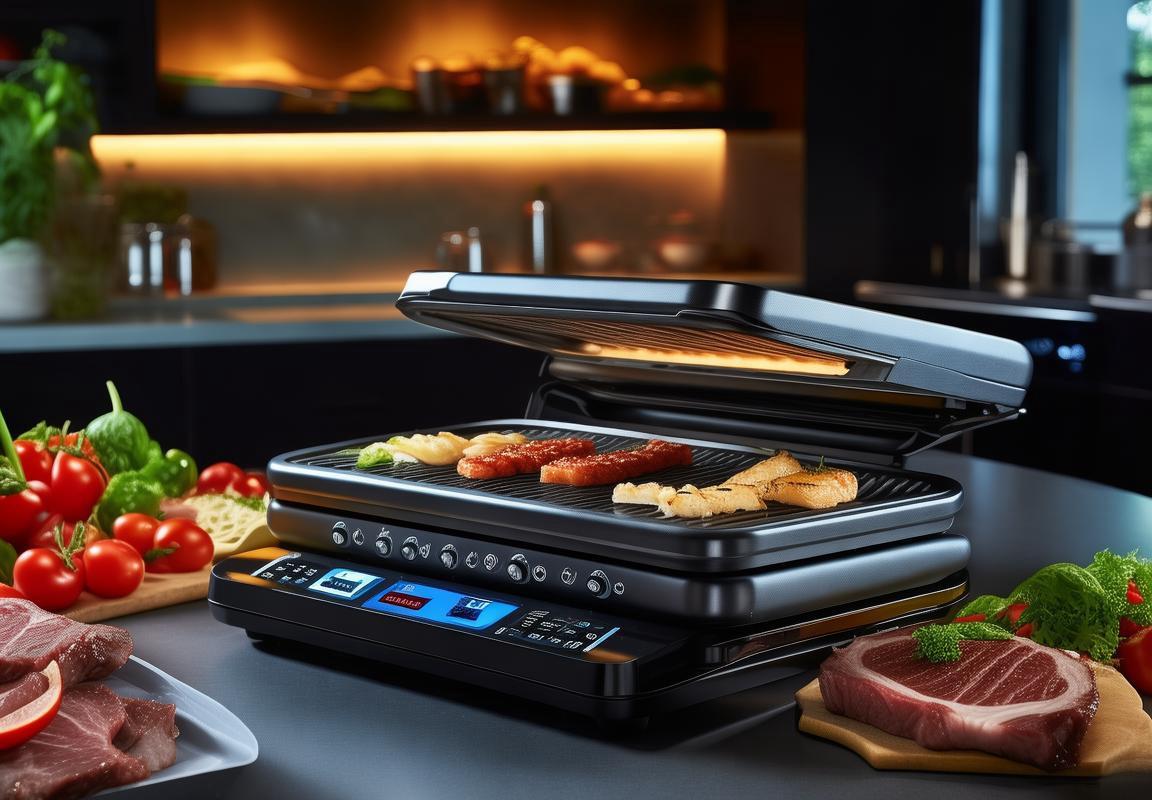
The Rise of Contact Grills in the Western Market
In recent years, the culinary landscape in the Western world has witnessed a significant shift, with contact grills emerging as a staple in many kitchens. These compact, countertop cooking appliances have gained immense popularity for their versatility and ease of use. From bustling urban apartments to spacious suburban homes, the rise of contact grills has been nothing short of remarkable.
The compact design of contact grills makes them a perfect match for smaller living spaces, where every inch of counter real estate counts. This has particularly resonated with the urban demographic, who often seek efficient cooking solutions that don’t require a lot of time or effort. The convenience factor is a major draw, as these grills can quickly cook a variety of foods, from delicate sandwiches to hearty steaks, all on a single, flat surface.
As health consciousness has surged in Western societies, so too has the interest in cooking methods that enhance the flavor of food without the need for excessive oil. Contact grills offer a low-fat cooking alternative, as the heat is distributed evenly across the grill surface, which helps to seal in the natural juices of the food. This method not only promotes healthier eating habits but also delivers a unique taste profile that is hard to replicate with other cooking techniques.
The integration of advanced technology has also played a pivotal role in the rise of contact grills. Modern models often come equipped with non-stick surfaces, which eliminate the need for added fats and make clean-up a breeze. Some models even feature digital controls, allowing users to precisely manage the temperature and cooking time, ensuring that every meal is cooked to perfection.
In terms of design, contact grills have evolved to cater to a wide range of aesthetic tastes. From sleek stainless steel finishes to vibrant colors, there’s a contact grill out there for every kitchen decor. This attention to style has not only made them functional kitchen tools but also decorative pieces that can add a touch of personality to any kitchen.
The Western market has also seen a surge in the customization of contact grills. Consumers are no longer satisfied with one-size-fits-all appliances; they want devices that reflect their individual tastes and needs. This has led to a wave of personalized options, from custom grill patterns and colors to innovative features like adjustable heat zones and built-in temperature probes.
The rise of contact grills in the Western market is also closely tied to the growing trend of outdoor cooking. With the advent of tailgating parties, backyard barbecues, and outdoor dining experiences, having a portable and efficient cooking solution is more important than ever. Contact grills have stepped into this niche, offering a convenient and portable alternative to traditional grills, perfect for those who enjoy the outdoors but lack the space or the desire to maintain a full-sized grill.
Moreover, the rise of contact grills has been bolstered by the increasing number of health and wellness influencers advocating for low-fat cooking methods. These influencers have played a crucial role in educating consumers about the benefits of contact grilling, thereby driving sales and further cementing the grill’s status as a must-have kitchen appliance.
Another factor contributing to the popularity of contact grills is the convenience they offer for busy lifestyles. With long hours at work and demanding schedules, many Western consumers are looking for quick and easy meal solutions. Contact grills provide a fast way to prepare a meal, which is particularly appealing to working professionals and families on the go.
As the Western market continues to embrace contact grills, it’s clear that this trend is not just a passing fad. The combination of convenience, health benefits, and customizable options has positioned contact grills as a versatile and indispensable part of modern kitchens. With ongoing innovation and a focus on meeting consumer demands, the future of contact grills in the Western market looks bright and promising.
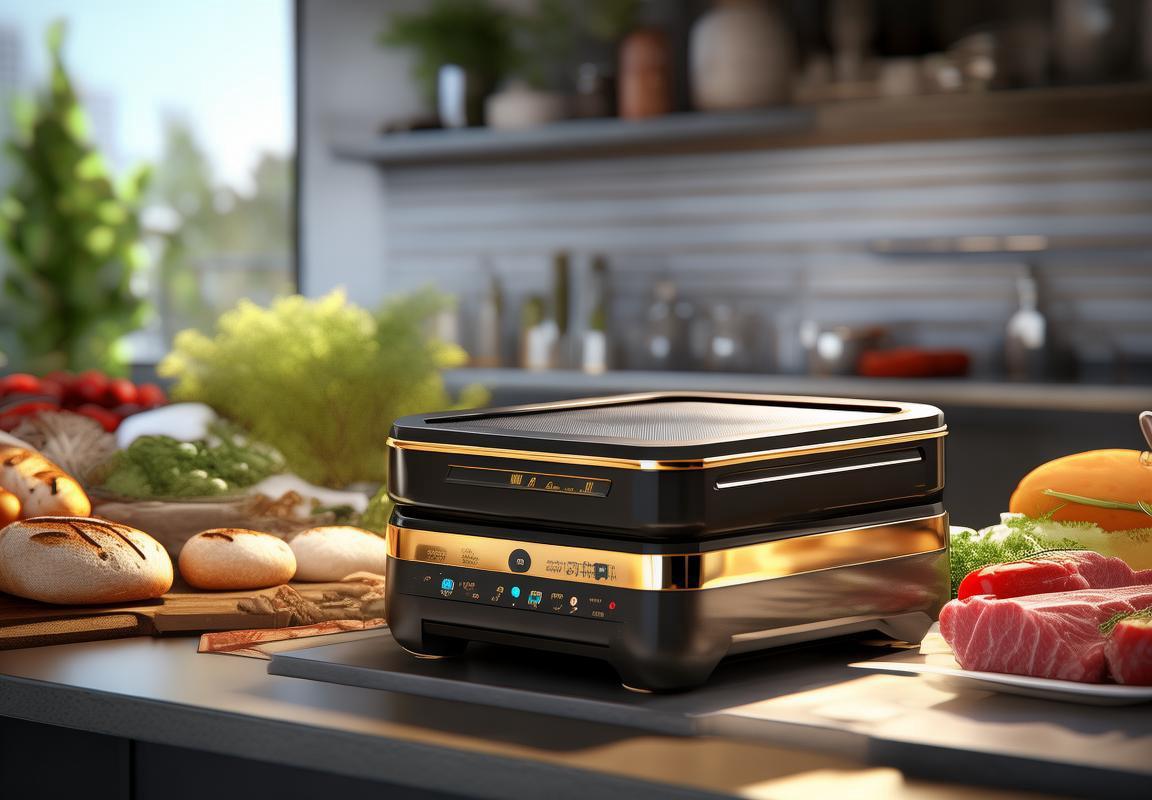
Why Customization Matters in the Kitchen Appliance Sector
In the ever-evolving landscape of kitchen appliances, customization has emerged as a pivotal factor that shapes consumer preferences and market trends. This shift is particularly pronounced in the contact grill sector, where the ability to tailor appliances to individual needs has become a significant driver of growth and innovation. Here’s why customization matters in the kitchen appliance sector, with a focus on contact grills.
The Personal Touch in CookingCustomization allows consumers to infuse their personal style into their cooking experience. Whether it’s choosing a specific color for a contact grill or selecting features that cater to specific dietary preferences, this personalization extends beyond just aesthetics. It reflects a deeper connection to the appliance, making cooking not just a functional activity but a personal expression.
Adapting to Diverse DietsAs the world becomes more health-conscious, dietary preferences and restrictions have become increasingly diverse. Customizable contact grills offer a solution by providing options for low-carb, gluten-free, or even vegan cooking surfaces. This adaptability ensures that every member of the household can enjoy delicious meals without compromising on their dietary requirements.
Enhancing Performance with FeaturesThe ability to customize a contact grill means selecting features that enhance its performance. From adjustable heat settings to non-stick surfaces, these features can make cooking easier and more efficient. Users can choose grills that suit their cooking style, whether it’s searing steaks, grilling vegetables, or even making sandwiches.
Reducing Waste and Maximizing IngredientsCustomization can also lead to more efficient use of ingredients. With adjustable cooking temperatures and times, users can optimize their cooking process to minimize waste. For example, a custom setting might allow for just the right amount of sear on a steak, ensuring that the meat is tender without overcooking and wasting the expensive cuts.
Building Brand LoyaltyWhen a brand offers customization, it creates a loyal customer base. Customers who feel that a product is tailored to their unique needs are more likely to remain loyal to the brand. This loyalty can translate into repeat purchases, positive word-of-mouth, and a stronger market position for the company.
Innovation and Product DevelopmentCustomization drives innovation in product development. Companies are constantly seeking new ways to offer personalized experiences through their appliances. This leads to the creation of unique features and functionalities that might not have been considered otherwise, pushing the boundaries of what is possible in kitchen technology.
Cost-Effective CustomizationAdvancements in technology have made customization more cost-effective. High-tech manufacturing processes and digital platforms allow companies to offer a wide range of customization options without significantly increasing the price point. This affordability makes customization accessible to a broader market.
Global Market TrendsThe demand for customization is not confined to any single region. In the Western market, particularly, there is a growing trend towards personalized products. This is evident in the kitchen appliance sector, where contact grills with customizable options are becoming more popular.
Eco-Friendly and Sustainable ChoicesCustomization can also extend to eco-friendly and sustainable aspects of the appliance. Consumers can choose grills made from recycled materials or with energy-saving features. This aligns with the broader environmental movement and appeals to consumers who are conscious of their carbon footprint.
In conclusion, customization in the kitchen appliance sector, especially in contact grills, is a game-changer. It not only caters to the diverse needs of consumers but also drives innovation and fosters brand loyalty. As the market continues to evolve, the importance of customization is likely to grow, offering a more personalized and efficient cooking experience for all.
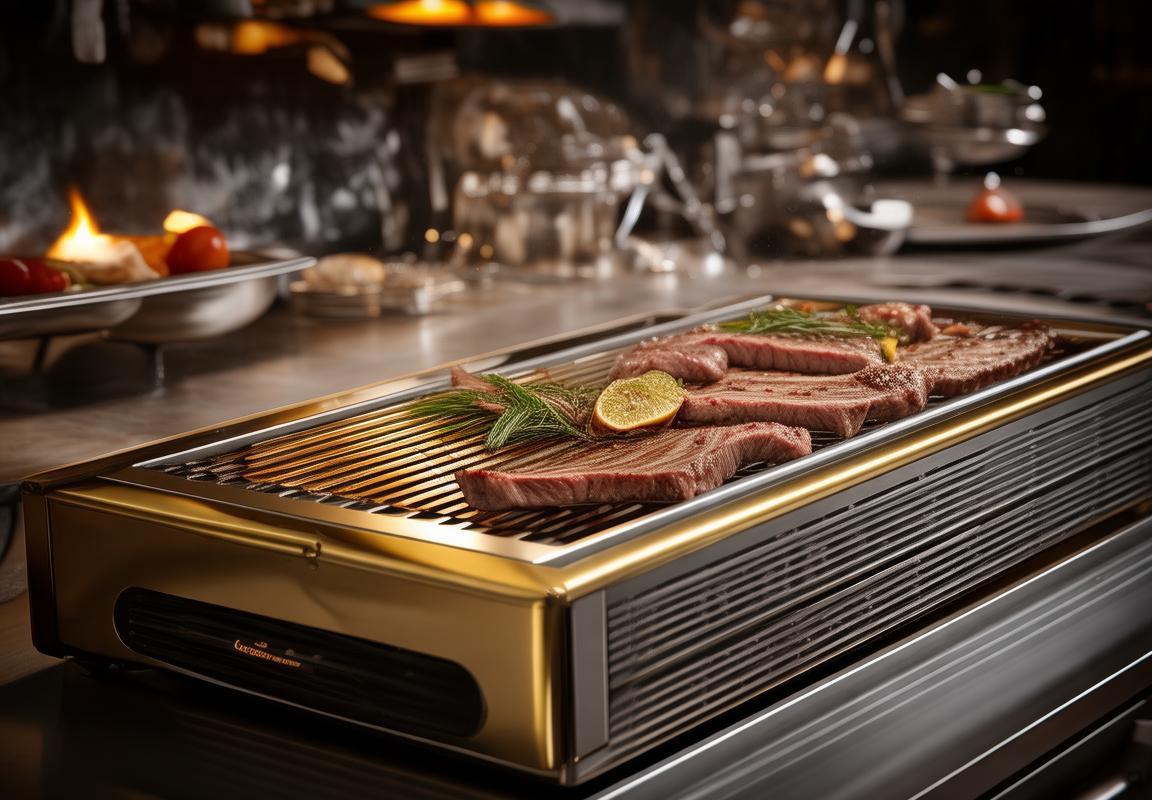
Understanding the European and American Consumer Preferences
In the dynamic world of kitchen appliances, understanding consumer preferences is paramount. When it comes to the European and American markets, these preferences are shaped by a unique blend of cultural nuances, lifestyle choices, and technological advancements. Let’s delve into the intricacies of what drives consumer decisions in these regions.
European consumers are known for their appreciation of quality and design. The kitchen, in many European homes, is not just a place for cooking but a hub for socializing and entertainment. This is reflected in their preference for kitchen appliances that not only perform well but also enhance the aesthetic of the space. When it comes to contact grills, European buyers often look for models that offer versatility, such as those that can be used for grilling, searing, and even panini-making. The demand for eco-friendly and energy-efficient appliances is also on the rise, as sustainability becomes a key consideration in their purchasing decisions.
On the other hand, American consumers tend to be more focused on convenience and functionality. The kitchen in the U.S. is often a place for quick meals and the hustle of daily life. As such, they gravitate towards contact grills that are easy to use and maintain. Features like non-stick surfaces, adjustable heat settings, and quick clean-up options are highly valued. Additionally, American consumers are increasingly interested in health and wellness, leading to a growing market for contact grills that offer options for grilling with less oil, which is seen as a healthier cooking method.
In Europe, there’s a strong preference for appliances that can be integrated into smart home systems. The integration of contact grills with smart technology allows for remote control and monitoring, which appeals to tech-savvy consumers who want to manage their kitchen appliances more efficiently. The ability to set timers and preheat the grill from a smartphone or tablet is a feature that resonates well with the European market.
American consumers, while also embracing smart technology, are more focused on the immediate benefits of such features. They appreciate the convenience of pre-programmed cooking settings that can cater to different types of food and cooking preferences. The American market also sees a significant interest in contact grills that come with a variety of attachments, such as flat tops for cooking eggs or pancakes, which adds to the versatility of the appliance.
The European market has a soft spot for unique and innovative designs. Contact grills that come in sleek, modern designs or those that offer customizable colors and finishes are more likely to catch the eye of European consumers. The aesthetic appeal of an appliance can sometimes outweigh its functionality, as it becomes a statement piece in the kitchen.
In contrast, American consumers are more pragmatic in their approach to design. While they appreciate a good-looking appliance, functionality often takes precedence. A contact grill that is durable, reliable, and has a user-friendly design is typically more appealing to the American consumer.
When it comes to brand reputation, European consumers are more inclined to trust well-established brands that have a history of producing high-quality products. They are willing to pay a premium for appliances that are known for their longevity and performance. American consumers, while also valuing brand reputation, are more price-sensitive and often look for value for money when making their purchases.
Health and safety are paramount in both markets, but the European consumer places a higher emphasis on certifications and compliance with strict European safety standards. American consumers, while equally concerned, are also influenced by FDA regulations and may be more swayed by endorsements from health and wellness influencers.
The rise of online shopping has had a significant impact on consumer preferences in both Europe and America. Consumers in both regions are now more likely to research and purchase kitchen appliances online, looking for detailed product descriptions, customer reviews, and easy-to-use interfaces. The ability to compare prices and features across different retailers has made the buying process more transparent and consumer-centric.
In conclusion, the European and American markets for contact grills, while sharing some commonalities, have distinct preferences that are influenced by cultural, lifestyle, and technological factors. Understanding these preferences is crucial for manufacturers looking to tap into these lucrative markets. By offering products that cater to the unique needs and desires of consumers in each region, companies can create a competitive edge and drive sales.
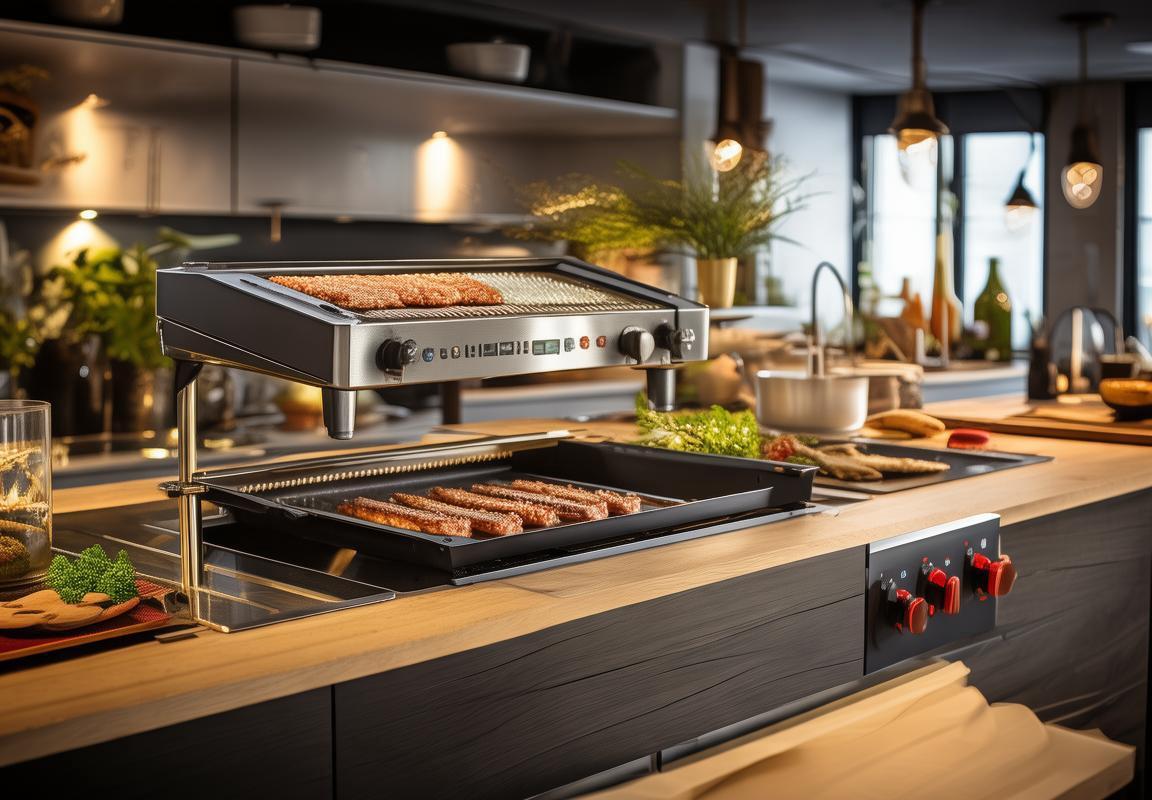
Key Trends in Customized Contact Grills
In recent years, the kitchen appliance sector has witnessed a significant shift towards customization, and this trend is particularly pronounced in the contact grill market. Here are some key trends shaping the landscape of customized contact grills:
Grill Plates with Variable Surface TexturesConsumers are increasingly seeking contact grills with grill plates that offer a variety of surface textures. From classic cross-hatching to diamond patterns, these textures not only enhance the aesthetic appeal but also the cooking experience. Some models now come with interchangeable plates, allowing users to switch between different textures based on their preferred cooking style and food type.
Smart Technology IntegrationThe integration of smart technology into contact grills has become a major trend. Features like temperature control, Bluetooth connectivity, and recipe integration allow users to tailor their grilling experience with precision. Smart grills can often be controlled through a smartphone app, providing users with real-time feedback and the ability to adjust settings remotely.
Sustainability and Eco-Friendly DesignsWith growing environmental concerns, there’s a noticeable trend towards sustainable and eco-friendly designs in contact grills. This includes the use of recycled materials, energy-efficient heating elements, and designs that are easier to disassemble and recycle at the end of their life cycle. Consumers are looking for appliances that align with their values and reduce their carbon footprint.
Versatile Cooking FunctionsModern contact grills are not just for grilling; they are multipurpose cooking stations. Many models now offer a variety of cooking functions, such as searing, baking, toasting, and even air frying. This versatility allows for a wider range of recipes to be prepared on a single appliance, making them a staple in busy households.
Personalized Color and Design OptionsCustomization extends beyond functionality to include aesthetic appeal. Contact grill manufacturers are now offering a range of color and design options to cater to individual tastes. From sleek stainless steel finishes to bold, vibrant colors, consumers can choose a grill that complements their kitchen decor and reflects their personal style.
Advanced Cooking TechniquesInnovations in cooking technology are driving the customization trend. Some contact grills now come with features that mimic traditional grilling techniques, such as infrared heating for fast and even cooking. Others offer programmable settings for specific types of meat, ensuring that the grill delivers the perfect sear and flavor profile.
Increased Focus on Health and NutritionAs health and wellness become more important, contact grills are being designed with health-conscious consumers in mind. Features like non-stick coatings, which reduce the need for excessive oil, and adjustable heat settings that prevent burning, are becoming standard. This focus on healthy cooking methods is resonating with consumers looking to maintain a balanced diet.
Interactive and Educational ContentManufacturers are also recognizing the value of providing educational content to enhance the user experience. Many are offering interactive guides, cooking videos, and digital recipes that help users get the most out of their customized contact grills. This educational aspect not only aids in the adoption of new cooking techniques but also fosters a sense of community among users.
Customizable Add-Ons and AccessoriesTo further personalize the contact grill experience, manufacturers are offering a range of add-ons and accessories. These include different types of grill plates, temperature probes for precise cooking, and even built-in smokers for a more diverse culinary experience. The ability to expand the capabilities of the grill with additional components is a significant draw for consumers looking for a highly adaptable appliance.
In conclusion, the customization trend in the contact grill market is driven by a desire for personalization, innovation, and health-conscious cooking. As manufacturers continue to push the boundaries of what’s possible in kitchen appliances, consumers are finding more ways to tailor their grilling experiences to their unique preferences and needs.
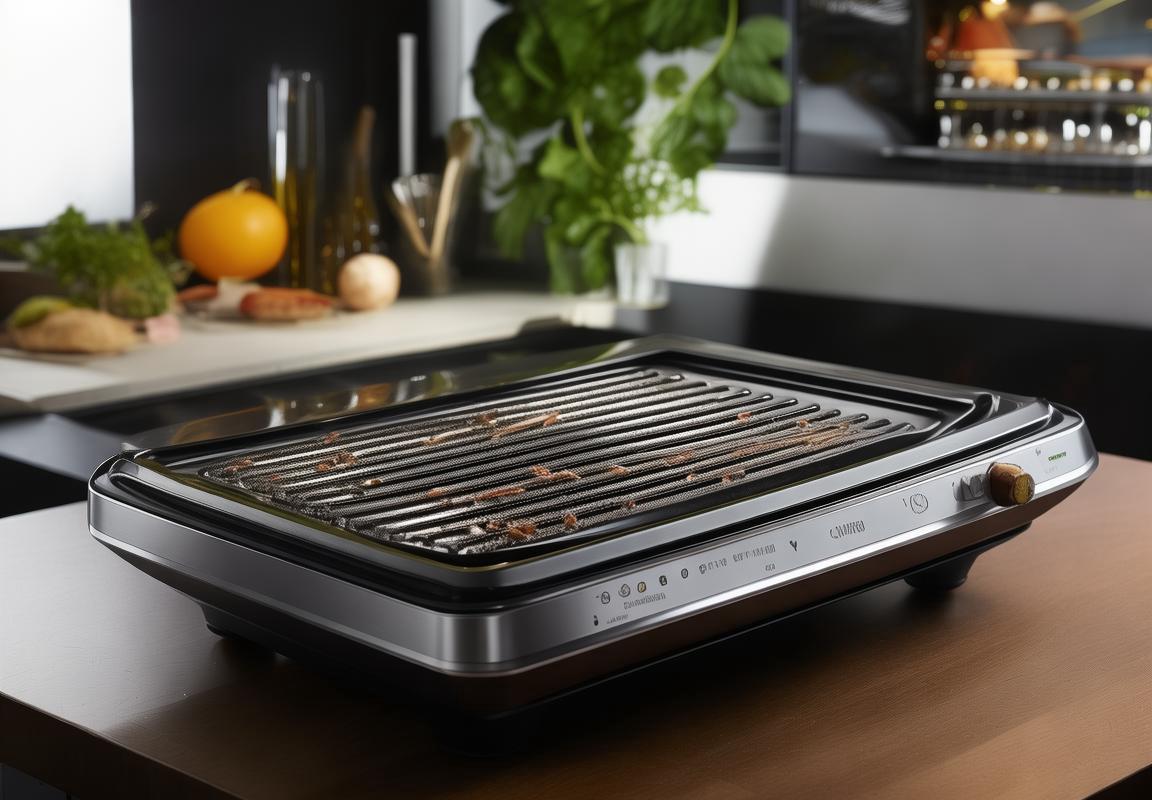
Innovative Features that Drive Customization
In recent years, the kitchen appliance sector has seen a significant shift towards customization, and this trend is particularly pronounced in the contact grill market. Innovations in features have not only enhanced the functionality of these appliances but have also opened up new avenues for consumers to tailor their cooking experiences. Here are some of the key innovative features that are driving customization in contact grills:
The advent of adjustable heat settings has revolutionized the way contact grills are used. No longer are users confined to a single temperature for cooking; they can now fine-tune the heat to suit various types of food and cooking styles. This feature allows for more precise control over the cooking process, ensuring that delicate foods like fish are cooked to perfection without overcooking.
One of the standout features that has gained popularity is the presence of non-stick surfaces. These surfaces not only make cleaning easier but also provide a more even cooking experience. Consumers appreciate the convenience of a grill that requires minimal oil and can be cleaned with a simple wipe, making it a more hygienic option for health-conscious individuals.
The integration of smart technology has brought contact grills into the realm of smart kitchen appliances. With features like Bluetooth connectivity, users can control their grills remotely via smartphones or tablets. This not only adds a layer of convenience but also allows for monitoring and adjusting the grill’s settings while multitasking in the kitchen.
Safety features such as cool-to-the-touch handles and automatic shut-off mechanisms have become standard in modern contact grills. These innovations address the common concerns of users regarding burns and potential accidents. The ability to customize these safety features, such as choosing between different types of heat sensors, ensures that the grill is not only safe but also tailored to individual preferences.
Customizable cooking plates have become a hit among consumers looking for variety. These plates can be swapped out to accommodate different types of cooking, from searing steaks to toasting sandwiches. The ability to purchase additional plates or even create custom designs for plates adds a personal touch to the cooking experience and caters to the ever-growing demand for unique kitchenware.
Many contact grills now come with built-in temperature control systems that allow for precise cooking temperatures. This feature is particularly beneficial for those who enjoy grilling meats to a specific doneness level. The ability to set and maintain a precise temperature is a game-changer for enthusiasts who take pride in their culinary skills.
In the realm of convenience, features like reversible cooking plates have gained traction. These plates can be flipped to cook food on both sides, reducing the need for flipping and thus minimizing the risk of food sticking or burning. This innovation not only saves time but also adds an element of ease to the grilling process.
The inclusion of additional cooking surfaces, such as side burners or rotisserie attachments, has expanded the capabilities of contact grills. These features allow users to cook a wider variety of dishes, from sautéed vegetables to whole roasts, all on the same appliance. The versatility offered by these attachments is a significant draw for those who seek a multifunctional kitchen tool.
In terms of design, manufacturers have started to offer a range of color options and finishes for contact grills. This allows consumers to match their kitchen appliances to their personal style or the aesthetic of their kitchen decor. The customization of design elements is a subtle yet effective way to make the appliance feel more personal and integrated into the home environment.
Lastly, the rise of eco-friendly materials and energy-efficient designs has also played a role in driving customization. Consumers who are environmentally conscious can now choose contact grills made from sustainable materials and equipped with energy-saving features, aligning their kitchen appliances with their values.
These innovative features have not only made contact grills more versatile and user-friendly but have also sparked a wave of customization that caters to the diverse needs and preferences of consumers. As the kitchen appliance sector continues to evolve, it’s clear that the path to consumer satisfaction lies in continued innovation and the ability to offer personalized solutions.
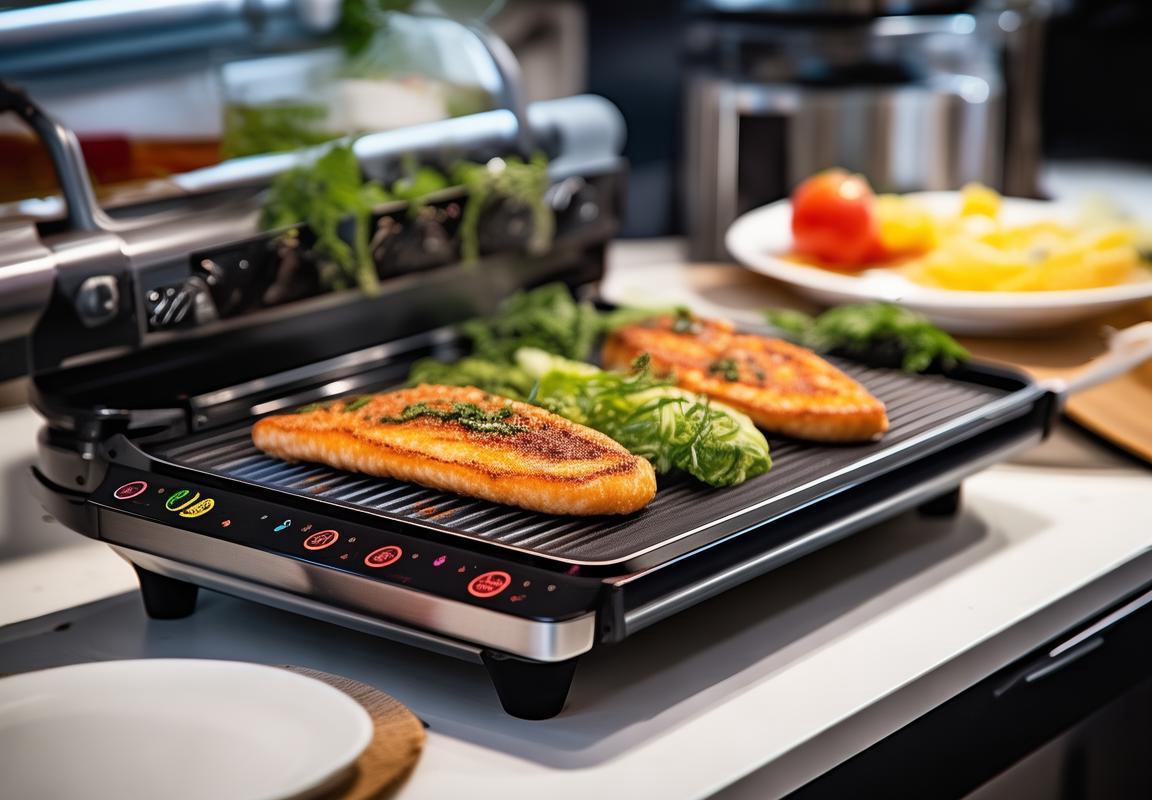
Market Analysis: Size, Growth, and Segmentation
The kitchen appliance sector is a dynamic and rapidly evolving market, with significant growth and diverse segmentation. Understanding the size, growth patterns, and segmentation of this market is crucial for players looking to capitalize on the opportunities it presents. Here’s a detailed look at these aspects:
The market size of the kitchen appliance sector has been expanding consistently over the years. Driven by factors such as urbanization, changing consumer lifestyles, and the increasing preference for convenience, the global kitchen appliance market is projected to reach a substantial value by 2025. In the United States alone, the market for kitchen appliances is expected to grow at a compounded annual growth rate (CAGR) of around 3-4% over the next decade.
One of the key drivers of growth in this sector is the rising middle class in developing countries, which is increasingly investing in home appliances to enhance their living standards. Europe and the Americas are leading the charge in terms of market size, with North America contributing a significant portion of the global kitchen appliance revenue. The U.S. market, in particular, is characterized by its preference for high-end and energy-efficient appliances.
In terms of growth, the kitchen appliance sector is witnessing a surge in demand for smart and connected appliances. Smart kitchen gadgets, such as smart ovens, refrigerators, and dishwashers, are becoming increasingly popular as consumers seek ways to integrate technology into their daily lives. This trend is not limited to the high-end market; even mid-range appliances are incorporating smart features to cater to a broader consumer base.
Segmentation in the kitchen appliance market is quite diverse, with various categories that cater to different consumer needs and preferences. The most prominent segments include:
-
Cooking Appliances: This segment encompasses products like ovens, cooktops, and ranges. It is one of the largest segments in the kitchen appliance market, with a significant focus on energy efficiency and advanced cooking technologies.
-
Refrigeration: Refrigerators and freezers are essential for food storage and preservation. The segment is characterized by innovations in energy efficiency, smart features, and capacity.
-
Cleaning Appliances: Dishwashers, garbage disposals, and vacuum cleaners are popular in this segment. The focus here is on convenience, efficiency, and the ability to handle various cleaning tasks.
-
Small Appliances: This category includes items like toasters, blenders, and coffee makers. It is driven by the need for quick and easy meal preparation, and it often sees rapid innovation and product launches.
-
Smart Kitchen Appliances: This emerging segment is all about integrating technology into kitchen appliances. Smart appliances not only offer convenience but also provide insights and control over kitchen operations.
The segmentation of the kitchen appliance market is not just about product categories; it also reflects different consumer segments based on demographics, psychographics, and geographic location. For instance, urban consumers may be more inclined towards smart appliances, while rural consumers might prioritize durability and energy efficiency.
The size and growth of the kitchen appliance market are influenced by various factors, including:
-
Economic Growth: Economic prosperity leads to increased disposable income, which in turn drives demand for higher-quality and more sophisticated kitchen appliances.
-
Technological Advancements: Innovations in materials, design, and functionality continue to push the boundaries of what’s possible in kitchen appliances.
-
Regulatory Changes: Energy efficiency standards and environmental regulations can significantly impact the market, influencing both the types of appliances produced and the consumer’s purchasing decisions.
-
Consumer Behavior: The growing trend towards health-conscious eating and meal prepping is leading to a demand for appliances that support these lifestyle choices.
-
Globalization: The kitchen appliance market is becoming more global, with companies expanding their reach and distribution networks to cater to international consumers.
In conclusion, the kitchen appliance market is a complex and multifaceted sector with substantial growth potential. By understanding its size, growth patterns, and segmentation, manufacturers and retailers can better position themselves to meet the evolving demands of consumers around the world.

Consumer Insights and Buying Behaviors
In today’s fast-paced and increasingly health-conscious world, understanding consumer insights and buying behaviors is crucial for any industry, including the kitchen appliance sector. When it comes to contact grills, these insights can shape product development, marketing strategies, and customer satisfaction. Here’s a closer look at what drives consumer choices and purchasing habits in the contact grill market.
Consumers are increasingly seeking appliances that not only fulfill their functional needs but also align with their personal values and lifestyle choices. In the case of contact grills, this means looking for features that cater to specific dietary preferences and cooking techniques.
Health and Wellness are at the forefront of consumer decision-making. Many buyers are gravitating towards contact grills that offer healthier cooking options, such as those that reduce the need for added fats and oils. Features like adjustable heat settings, non-stick surfaces, and removable grill plates that can be used for different cooking methods are becoming more popular as consumers aim to maintain a balanced diet.
Technology integration is another key factor influencing buying behaviors. Smart features, such as Bluetooth connectivity for monitoring cooking progress through a smartphone app, are becoming more appealing. These innovations not only simplify the cooking process but also provide users with the convenience of staying connected while preparing meals.
Brand reputation and certifications play a significant role in consumer choices. Consumers are more likely to invest in a contact grill from a brand they trust, especially if the product carries certifications that validate its quality, safety, and sustainability. For example, eco-friendly materials and energy-efficient designs are becoming more sought after.
Customization options are gaining traction as consumers desire appliances that reflect their individuality. Tailored features like adjustable cooking temperatures, multiple grill patterns, and even personalized designs are becoming more common, allowing users to create unique cooking experiences at home.
Sustainability and environmental concerns are shaping consumer preferences. Eco-conscious buyers are looking for appliances that are energy-efficient and made from recycled materials. Brands that demonstrate a commitment to reducing their carbon footprint and promoting environmental stewardship are likely to attract these environmentally friendly consumers.
Social proof and online reviews are powerful influencers. Consumers often rely on the experiences of others when making purchasing decisions. Positive reviews, influencer endorsements, and social media buzz can significantly impact the popularity of a contact grill. In fact, word-of-mouth recommendations remain one of the most effective ways to drive sales.
Price is always a factor, but it’s not just about finding the cheapest option. Consumers are willing to pay a premium for quality, durability, and long-term value. They are looking for appliances that will last and provide consistent performance over time, making the initial investment worthwhile.
The desire for convenience is undeniable. Modern consumers are looking for appliances that make their lives easier, especially in the kitchen. Contact grills with features like easy-to-clean surfaces, minimal assembly, and compact designs are becoming more appealing as time-poor individuals seek to streamline their cooking routines.
Lastly, the variety of cooking options is a major draw for consumers. From searing steaks to grilling vegetables, contact grills offer versatility that can cater to a wide range of culinary preferences. The ability to switch between direct and indirect cooking, as well as the possibility of using the appliance for other tasks like toasting or defrosting, is a significant advantage that consumers look for.
In conclusion, the insights into consumer buying behaviors in the contact grill market reveal a multifaceted landscape. From health and wellness to technology and sustainability, consumers are driven by a combination of factors that influence their purchasing decisions. By understanding these insights, manufacturers and marketers can better tailor their products and strategies to meet the evolving demands of the market.
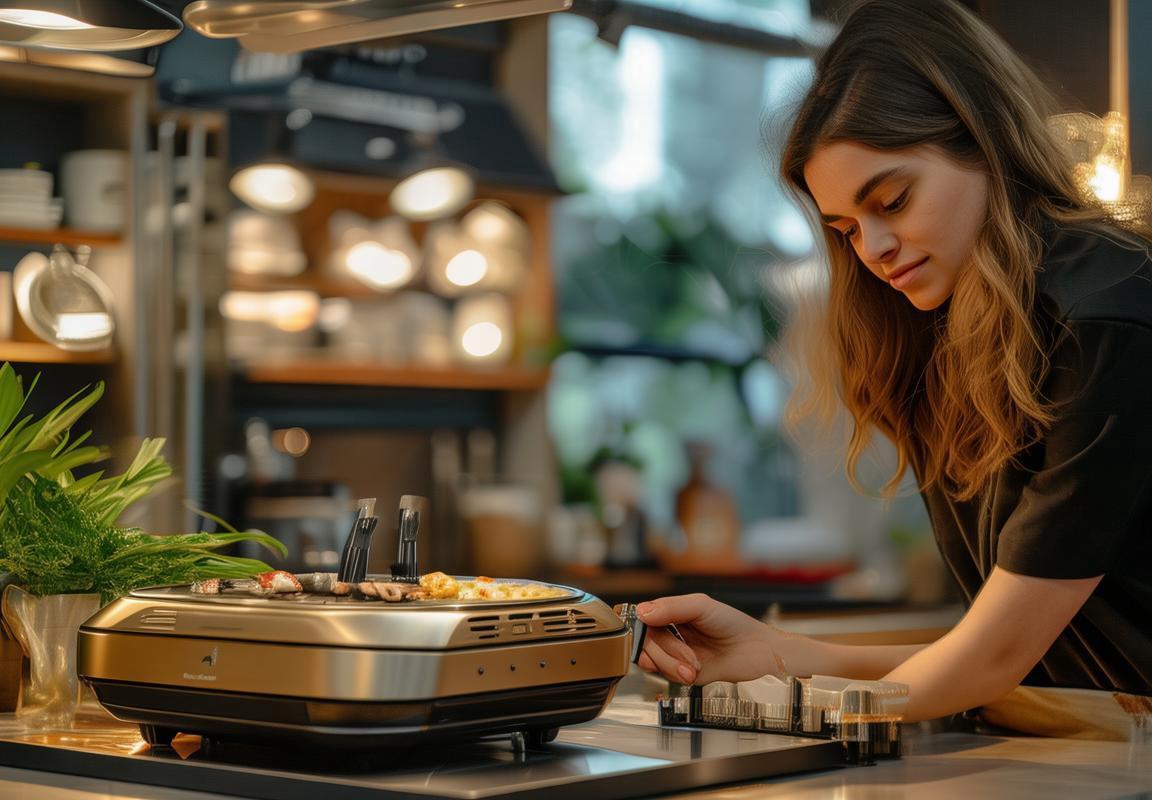
Challenges and Opportunities in the Customized Contact Grill Market
In the realm of kitchen appliances, the customized contact grill market is not just a niche but a rapidly evolving segment that presents both challenges and opportunities. Navigating the complexities of consumer preferences and market dynamics requires a keen understanding of the landscape.
The demand for personalized kitchen experiences has surged, with consumers seeking appliances that not only meet their culinary needs but also reflect their individual tastes and lifestyles. This shift has given rise to a market where customization is no longer a luxury but a standard feature. However, with this demand comes a set of challenges that manufacturers must address to capitalize on the opportunities.
One of the most significant challenges is the complexity of meeting diverse consumer preferences. Different regions have varying preferences when it comes to the type of food they grill, the features they seek in a grill, and the price points they are willing to pay. For instance, in Europe, there’s a strong preference for high-quality, durable grills that are often more expensive, while in the United States, there’s a greater emphasis on ease of use and value for money.
Manufacturers must also contend with the challenge of maintaining quality and consistency in customized products. Each grill is unique, and ensuring that each one meets the same standards of performance and safety is a logistical and quality control challenge. This requires robust supply chains and stringent quality assurance processes.
On the flip side, the opportunity lies in the ability to cater to these diverse preferences and create a loyal customer base. By offering customization options, manufacturers can tap into the market’s potential for growth. For example, incorporating smart technology that allows users to adjust heat settings, cooking times, and even the type of grill marks they prefer can significantly enhance the appeal of a contact grill.
Another opportunity arises from the health and wellness trend that has swept across both Europe and the United States. Consumers are increasingly looking for cooking methods that minimize added fats and preserve the natural flavors of food. Customized contact grills that offer features like adjustable heat levels and non-stick surfaces are well-positioned to meet these demands.
Sustainability is also a key opportunity in the customized contact grill market. As environmental concerns grow, there’s a growing market for appliances that are energy-efficient and made from sustainable materials. Companies that can offer eco-friendly options may find a competitive edge.
The rise of e-commerce has opened new avenues for manufacturers to reach customers. Direct-to-consumer sales and online marketplaces have made it easier for consumers to explore and purchase customized products. However, this also means that manufacturers must adapt to the demands of online shopping, which often include faster delivery times and seamless customer service.
Moreover, the integration of social media and influencer marketing has become a powerful tool for reaching consumers. By leveraging these platforms, manufacturers can showcase their products in a more engaging and relatable way, fostering brand loyalty and driving sales.
In terms of the competitive landscape, the market for customized contact grills is becoming increasingly crowded, with established appliance brands and new entrants alike vying for market share. This competition can drive innovation, but it also necessitates a strategic approach to branding and marketing.
Despite the challenges, the opportunity to create a market niche through customization is undeniable. By focusing on user experience, embracing technology, and staying attuned to the latest consumer trends, manufacturers can navigate the complexities of the customized contact grill market and turn them into opportunities for growth and success.

Expert Predictions for the Future of Customized Contact Grills
In the ever-evolving landscape of kitchen appliances, customized contact grills are not just a trend; they are a testament to the changing dynamics of consumer preferences. Here’s a glimpse into the challenges and opportunities that this niche market presents:
Grill enthusiasts are no longer satisfied with the one-size-fits-all approach. They seek appliances that not only meet their cooking needs but also reflect their personal style and preferences. This shift has given rise to a market that’s brimming with opportunities for innovation and differentiation.
The rise of online marketplaces has made it easier for consumers to explore and purchase customized contact grills. However, this has also introduced a new set of challenges, including the need for robust supply chain management to ensure timely delivery and quality control to maintain brand reputation.
Customization allows manufacturers to cater to specific consumer segments, such as outdoor enthusiasts, health-conscious individuals, or those with specific dietary requirements. This segmentation not only expands the market but also opens up opportunities for targeted marketing and product development.
As the market grows, so does the competition. Brands are racing to offer unique features and design elements that set them apart. This competition, while intense, is a double-edged sword. On one hand, it drives innovation; on the other, it can lead to a fragmented market with varying quality standards.
One of the biggest challenges in the customized contact grill market is the balance between personalization and scalability. While consumers crave uniqueness, manufacturers must also maintain efficiency and cost-effectiveness to stay competitive. Achieving this balance is crucial for long-term success.
The integration of smart technology in contact grills has opened up new avenues for customization. Users can now adjust temperature, cooking time, and even pre-programme recipes with just a few taps on their smartphones. This technological advancement has not only enhanced the user experience but has also created new opportunities for data-driven insights and personalized recommendations.
Environmental concerns are increasingly shaping consumer choices, and the customized contact grill market is no exception. Consumers are more likely to opt for grills made from sustainable materials or with energy-efficient features. This presents an opportunity for manufacturers to not only meet consumer expectations but also to promote their eco-friendly credentials.
The global pandemic has accelerated the shift towards home cooking and outdoor living. This has inadvertently created a surge in demand for contact grills, as they offer a convenient and safe way to enjoy barbecued meals. However, the long-term impact of this trend remains to be seen, as consumer behaviors may revert to pre-pandemic patterns once normalcy returns.
Safety and health regulations are another critical challenge for the customized contact grill market. With the rise in food safety concerns, manufacturers must ensure that their products meet stringent standards. This not only involves the design and manufacturing process but also the distribution and after-sales service.
The rise of social media has given rise to a new breed of influencers and home chefs who are passionate about cooking and kitchen appliances. Collaborating with these influencers can help brands tap into a highly engaged audience and promote their customized contact grills effectively.
Finally, the opportunity lies in the ability to adapt to changing consumer needs. As trends come and go, manufacturers must be agile enough to pivot their strategies and offerings accordingly. Whether it’s through new features, materials, or even business models, the key to success in the customized contact grill market is the ability to stay ahead of the curve and meet consumer demands.